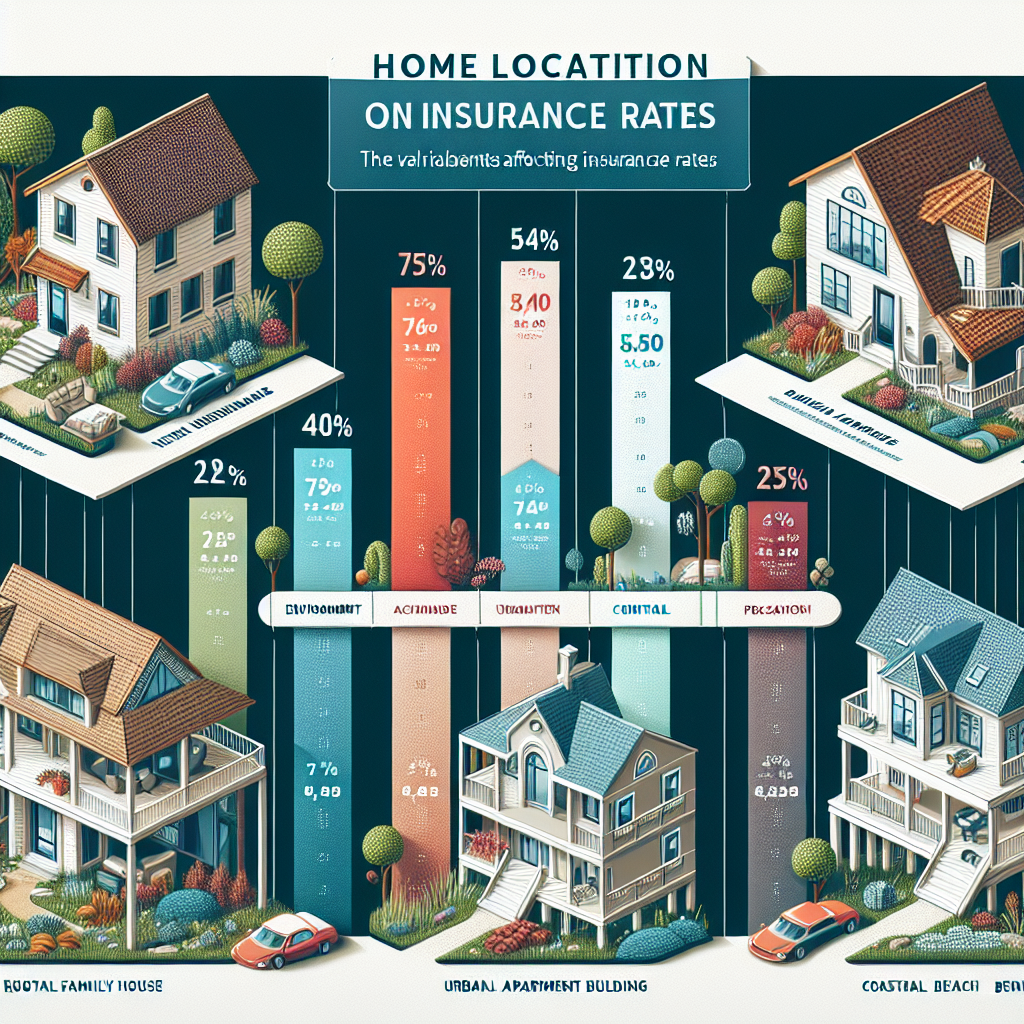===INTRO:===
Understanding the ins and outs of your insurance rates can feel like navigating a complicated maze. One critical factor that often gets overlooked is how your home’s location affects your insurance rates. Whether you live in a bustling city, a quiet suburb, or a rural area, your residence’s geographical positioning plays a pivotal role in determining your premiums. This article will explore the various elements that contribute to the impact of your home’s location on insurance costs, unraveling the intricacies that can save you money or leave you at a disadvantage.
How Your Home’s Location Influences Insurance Costs
When it comes to insurance premiums, the adage "location, location, location" holds true. The specific area where your home is situated can significantly affect your insurance rates due to several key factors. For starters, insurers assess the risk of various hazards that are prevalent in specific regions. For instance, homes in flood-prone areas often carry higher premiums because the likelihood of water damage is increased. Similarly, properties located in zones with higher crime rates may incur additional costs as insurers factor in the greater risk of theft or vandalism.
Beyond natural disasters and crime, the proximity to essential services like fire departments and hospitals plays a crucial role in determining your insurance costs. Homes close to fire stations typically enjoy lower premiums, as the risk of extensive fire damage is reduced. Insurers are more inclined to offer competitive rates to homeowners whose properties are within a reasonable distance to emergency services. This correlation underscores the importance of considering not just the aesthetics of a neighborhood but also the practical implications of its location.
Another vital aspect to consider is the local building codes and standards enforced in your area. Regions with strict regulations regarding construction materials and safety measures may see lower insurance rates, as properties are built to withstand potential hazards effectively. For instance, homes constructed in compliance with earthquake-resistant standards in seismic zones often enjoy reduced premiums due to the lower risk of significant structural damage. This highlights the interconnectivity of regional construction practices and insurance costs, making it essential for homeowners to stay informed.
Evaluating Regional Variations in Insurance Premiums
When discussing how your home’s location affects your insurance rates, it’s imperative to analyze regional variations in premiums. Different states, and even neighborhoods within the same city, can exhibit stark contrasts in insurance costs. For example, states prone to hurricanes, like Florida and Texas, often have higher home insurance rates due to the elevated risk of storm damage. Conversely, states with lower natural disaster risks may offer significantly lower premiums, making them more appealing for homeowners seeking affordable insurance options.
Additionally, economic factors play a vital role in determining insurance costs across different regions. Areas with higher property values typically see increased insurance premiums since the potential loss is greater in the event of damage or theft. Furthermore, the local economy influences the overall risk assessment by insurance companies. Regions experiencing economic downturns may witness an uptick in crime rates, which can lead to higher premiums as insurers recalibrate their risk evaluations. Maintaining awareness of these economic variables can be crucial in understanding and potentially negotiating your home insurance rates.
Moreover, the availability of competitive insurance markets can substantially impact regional pricing. States with numerous insurance providers may see lower rates due to the competition among companies striving to attract customers. In contrast, more rural or less densely populated areas might offer limited options, leading to higher premiums. Homeowners should take the time to research and shop around for various quotes to ensure they are getting the best possible rates based on their unique location. The ability to leverage competition can lead to significant savings in insurance costs that are often overlooked.
===OUTRO:===
In conclusion, the intricate relationship between your home’s location and your insurance rates cannot be overstated. From the risk of natural disasters and crime to local building codes and competitive market dynamics, various factors come into play. As a homeowner, understanding these nuances equips you with the knowledge to make informed decisions that could save you money and protect your investment. By staying aware of the impact of your geographical location on insurance costs, you can confidently navigate the insurance landscape and secure the best coverage for your needs. Don’t hesitate to evaluate your options and reach out to insurance experts for personalized insights tailored to your specific situation.
Understanding Home Insurance Requirements Across CanadaUnderstanding Home Insurance: What Coverage Do You Need?Understanding Reasons for Car Insurance Claim DenialsRelevant LinkRelevant LinkRelevant LinkUnderstanding Canada’s Insurance Bank: A Comprehensive GuideUnderstanding Insurance Broker Salaries in Canada: A GuideUnderstanding Canada’s Insurance Coverage for Breast PumpsRelevant LinkRelevant LinkRelevant LinkUnderstanding Canada Travel Insurance for Pre-Existing ConditionsAffordable Visitor Health Insurance Options in Canada ExploredExploring Canada’s Leading Insurance Companies: A Comprehensive GuideRelevant LinkRelevant LinkRelevant Link
